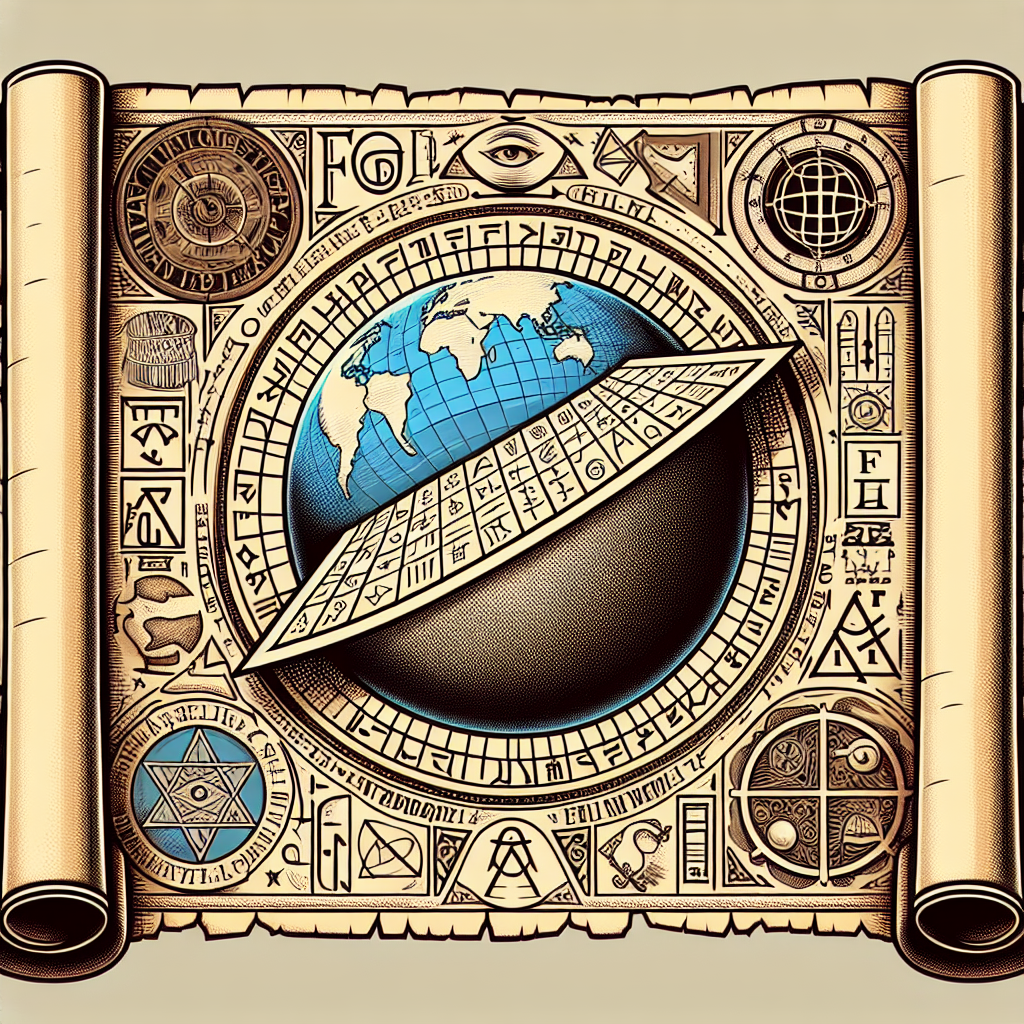The Flat Earth Theory: A Resurgence of a Historical Perspective
Historical Context of the Flat Earth Theory
The Flat Earth theory has a long and complex history, with its roots deeply embedded in ancient civilizations. Early cultures, such as the Egyptians and Mesopotamians, often depicted the Earth as flat in their cosmologies. In ancient Greece, philosophers like Pythagoras and Plato proposed spherical models based on mathematical reasoning, while Aristotle provided observational evidence, such as the shape of the Earth’s shadow during lunar eclipses.
During the Middle Ages, the notion of a flat Earth persisted, particularly in certain religious contexts. However, the Renaissance ushered in a revival of scientific inquiry, leading to the widespread acceptance of the heliocentric model proposed by Copernicus and later supported by Galileo’s observations. Over the centuries, the spherical Earth became an established scientific principle, largely undisputed among scholars.
The Modern Flat Earth Movement
Despite centuries of scientific consensus, the Flat Earth movement saw a resurgence in the late 20th century and has gained substantial traction in the 21st century, particularly through social media platforms. Proponents of the theory advocate that the Earth is flat rather than spherical, asserting that conventional science is a product of government conspiracies and misinformation.
The rise of this movement can be attributed to various factors, including widespread skepticism toward authoritative sources, a distrust of mainstream science, and the accessibility of information (and misinformation) via the internet. Flat Earth societies have flourished, with conferences, online forums, and social media communities that foster discussion and disseminate their ideas.
Key Arguments of Flat Earthers
Flat Earthers present several cornerstone arguments that challenge the established understanding of the Earth’s shape. These include:
-
Visual Observation: Proponents argue that if the Earth were truly a sphere, the curvature should be readily observable. They often cite personal observations, stating that bodies of water appear flat and distant landmarks remain visible.
-
Water Surface: Advocates contend that water always seeks to find its level, suggesting that oceans and lakes would naturally form a flat surface rather than curving around a ball.
-
Flight Paths: Some Flat Earthers point to the paths that commercial airlines take as evidence. They claim that certain routes appear more logical on a flat map than on a globe, arguing that the curvature of the Earth would dictate different flight patterns.
-
NASA and Space Missions: A significant argument comes from claims about space agencies like NASA. Flat Earthers assert that images of the Earth from space are fabricated, maintaining that they have never been produced outside of misleading graphics.
Scientific Refutations of Flat Earth Claims
Scientific communities have consistently rebutted Flat Earth claims through rigorous scientific inquiry and empirical evidence.
-
Curvature Observations: Numerous studies confirm the Earth’s curvature, including the phenomenon of ships disappearing hull-first over the horizon. Additionally, scientific instruments like laser surveys can detect and measure this curvature.
-
Photographic Evidence: Thousands of images from space missions, including those taken by astronauts aboard the International Space Station (ISS), provide visual proof of Earth’s spherical shape. These images have been corroborated by independent organizations and are backed by science.
-
Gravity: The spherical Earth model is underpinned by gravitational theory, which explains that a round planet creates a gravitational pull toward its center, resulting in the observed phenomena of weight and buoyancy, as well as atmospheric pressure.
-
Flight Path Analysis: When pilots and aviation experts analyze flight paths, they confirm that the shortest distance between two points (great circle routes) takes the curvature of the Earth into account. The routes are optimized for fuel efficiency and safety.
The Psychological Aspect of Belief in Flat Earth
Understanding why individuals subscribe to Flat Earth theories requires delving into psychology. Cognitive biases, particularly those related to confirmation bias and the Dunning-Kruger effect, play significant roles. Many supporters might lack in-depth scientific education, yet feel confident in their conclusions. Additionally, the human tendency to favor certain narratives over factual rebuttals creates fertile ground for conspiracy theories.
Community reinforcement is another vital factor. Online forums provide a space where belief in Flat Earth is echoed back, creating a support network that validates these views. This social aspect of belief can sometimes outweigh empirical evidence, as individuals often prioritize belonging over factual accuracy.
The Role of Technology and Social Media
The digital age has significantly impacted the resurgence of the Flat Earth movement. Social media platforms such as YouTube, Twitter, and Facebook facilitate the rapid spread of Flat Earth content. Algorithms often promote sensational or controversial content, leading to greater visibility for Flat Earth videos and discussions. This can create echo chambers where critical thinking is minimized, and false information can proliferate unchallenged.
Moreover, the use of visual technology, including graphic animations and simulated models, helps proponents create convincing presentations that might mislead viewers. The blending of persuasive rhetoric with pseudoscience can make Flat Earth claims appear more legitimate to the untrained eye.
Legislative and Educational Implications
The rise of the Flat Earth movement raises concerns about education and scientific literacy. Some educators advocate for incorporating critical thinking and scientific methodology into curricula to arm students against misinformation. Strategies include teaching how to differentiate between evidence-based science and pseudoscience, emphasizing the importance of peer review, and promoting open discussion of doubts without dismissing inquiries outright.
In certain regions, Flat Earth belief intersects with broader anti-science sentiments, leading to potential legislative challenges. Discussions around educational standards, funding for science education, and public policy can become contentious in environments where Flat Earth theories gain traction.
Conclusion
The Flat Earth theory illustrates a fascinating intersection of science, psychology, and social dynamics. By examining the historical context, modern resurgence, psychological foundations, and social media’s role, we gain insights into why such beliefs can thrive in an age dominated by evidence-based science. Understanding these dimensions is critical for addressing misinformation and fostering a more scientifically literate society.






Leave a Reply